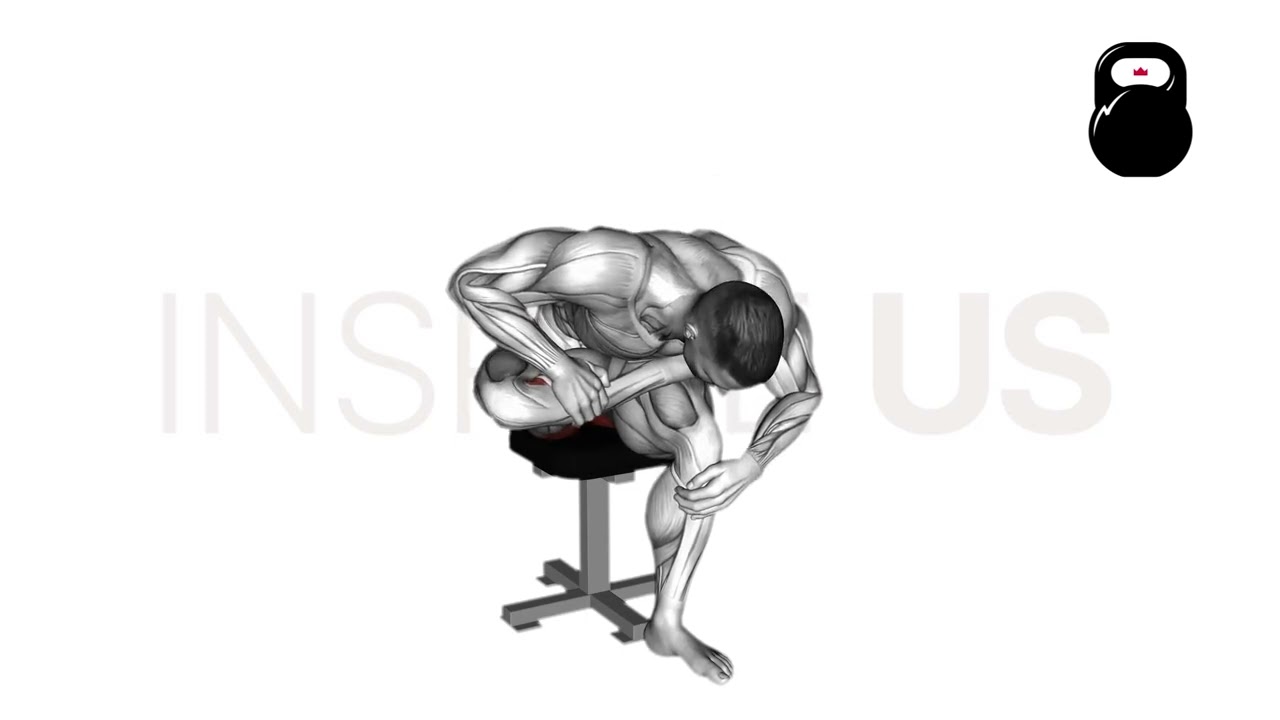Seated Piriformis Stretch: Benefits, Muscles Worked, and More
Whether for piriformis syndrome or tight glute muscles, performing a stretch meant to target the posterior chain is the right step to take.
One particularly convenient example is the seated piriformis stretch - of which, as the name implies, stretches the piriformis and other nearby muscles while in a seated position.
In essence, the seated piriformis stretch is performed by seating yourself at the edge of a chair and placing the shin of one leg over the thigh of the opposite leg. This lengthens both piriformis muscles, the entirety of the glutes and the quadriceps of the bent leg.
What is the Seated Piriformis Stretch?
In technical examination, the seated piriformis stretch can be classified as a unilateral multi-joint static stretch used in both a clinical and athletic context.
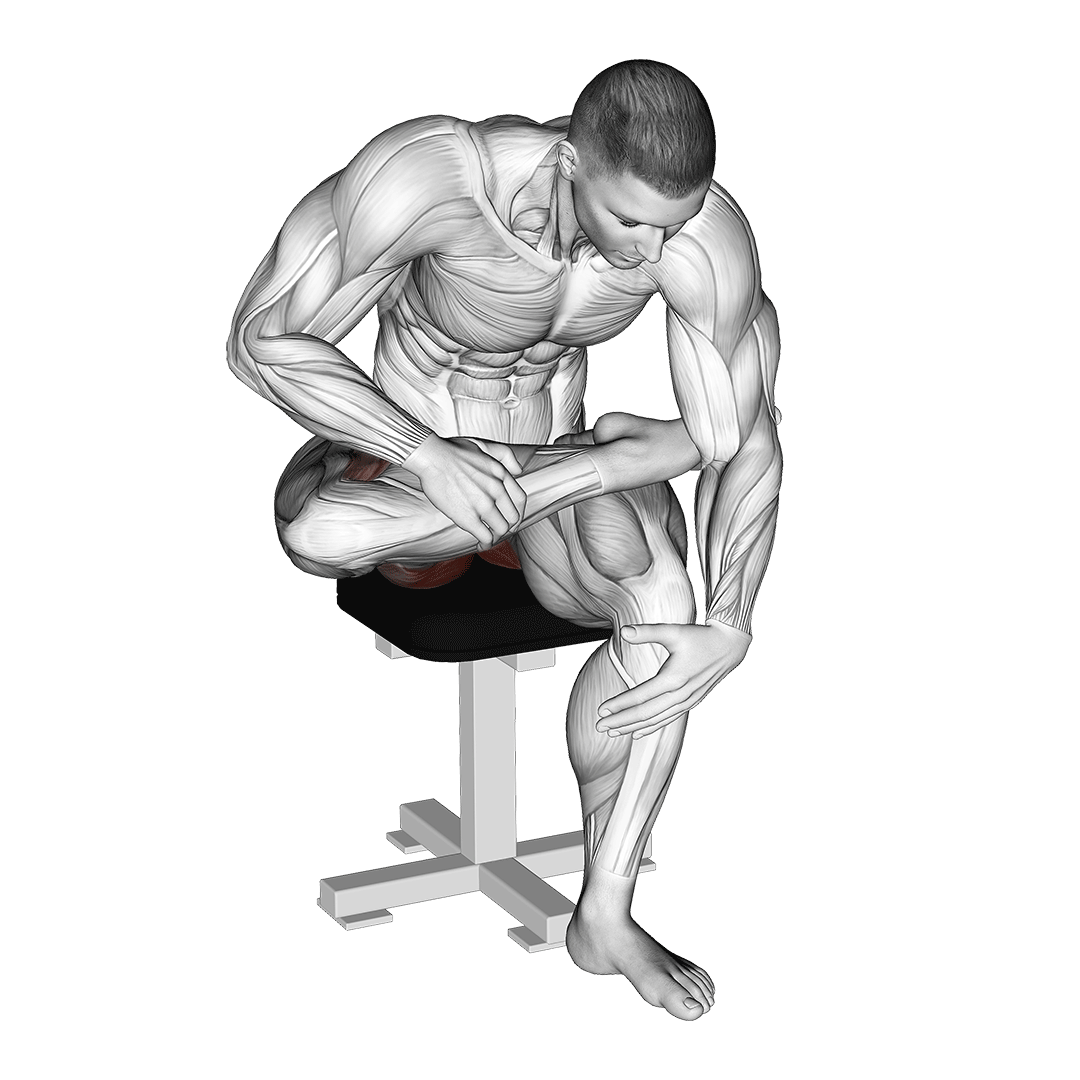
Often, the seated piriformis stretch is used to help correct piriformis-related sciatica, where the sciatic nerve is being compressed or pinched by an inflamed or misaligned piriformis muscle.
However, even in cases where these issues are not present, the seated piriformis stretch can be excellent for individuals who are sedentary or possess inflexible lower posterior chain muscles.
Remember to first speak to a medical professional prior to using the seated piriformis stretch for sciatica or any other sort of condition. Do not attempt to self-rehabilitate without prior medical approval.
How to Do a Seated Piriformis Stretch
To perform a repetition of the seated piriformis stretch, the exerciser will seat themselves around the edge of a chair, both feet flat on the ground approximately hip-width apart. The torso should begin upright and the spine in a neutral curvature prior to starting the stretch.
Now positioned correctly, the exerciser will raise one leg and place its shin or ankle along the thigh of the opposite leg, keeping the opposite leg’s foot planted on the floor. A stretch should be felt along the buttocks.
If no stretch is felt, the exerciser can bend forwards at the waist, keeping the spine neutral as they do so. This will further lengthen the piriformis and other nearby structures.
Hold for up to 30 seconds before repeating with the legs switched.
What Muscles and Joints are Targeted by the Seated Piriformis Stretch?
Apart from hitting the piriformis muscle, the remaining sections of the glutes are also stretched by the seated piriformis stretch. This includes the gluteus maximus, medius and minimus - as well as less superficial muscles like the obturator internus and quadratus femoris.
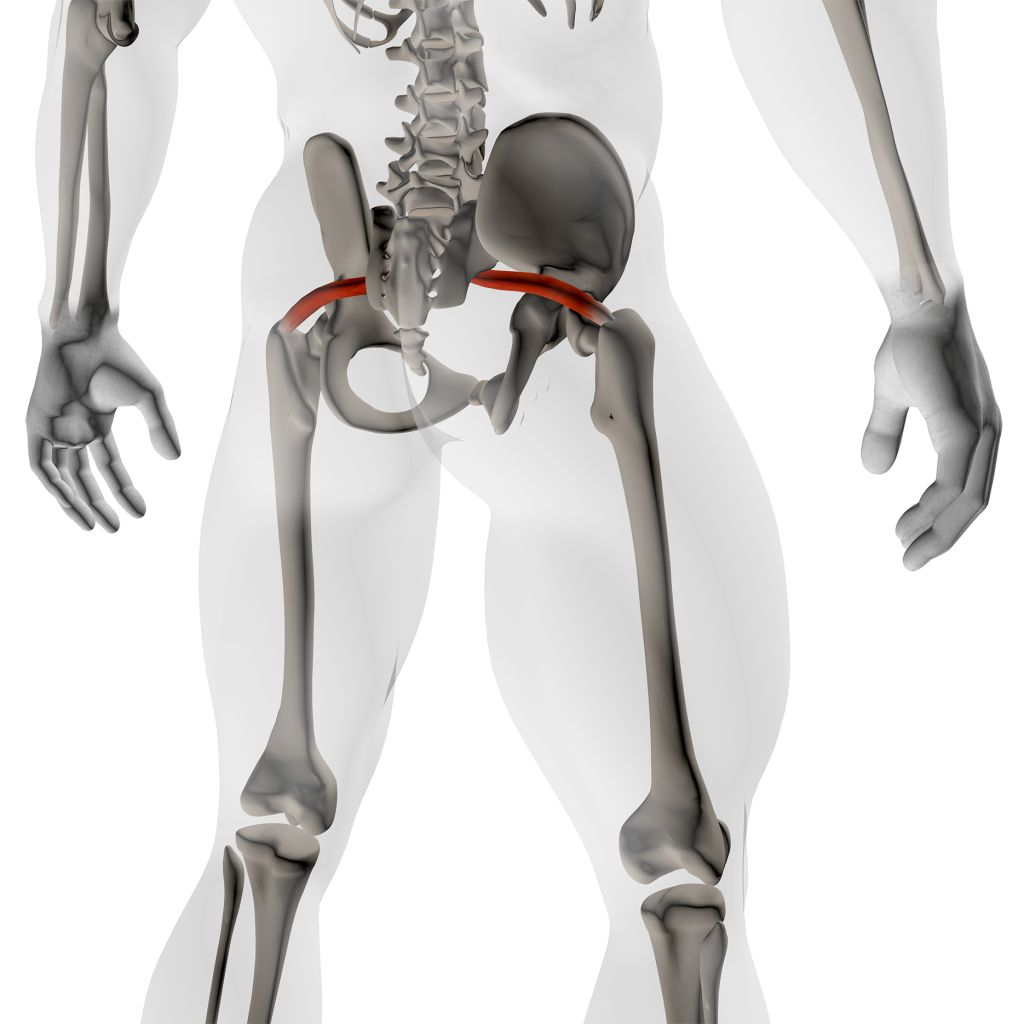
In terms of non-muscular tissue, the tendons connecting the femur to the pelvis are all stretched to some extent - as well as the quadriceps tendon of the bent leg.
What are the Benefits of Doing the Seated Piriformis Stretch?
The seated piriformis stretch is performed so as to achieve the following benefits.
Helps Relieve Pressure on Sciatic Nerve
The main clinical benefit to the seated piriformis stretch is its capacity to relieve tension and swelling in the piriformis muscle. This can help patients recover from sciatica and temporarily alleviate symptoms of pain and discomfort.
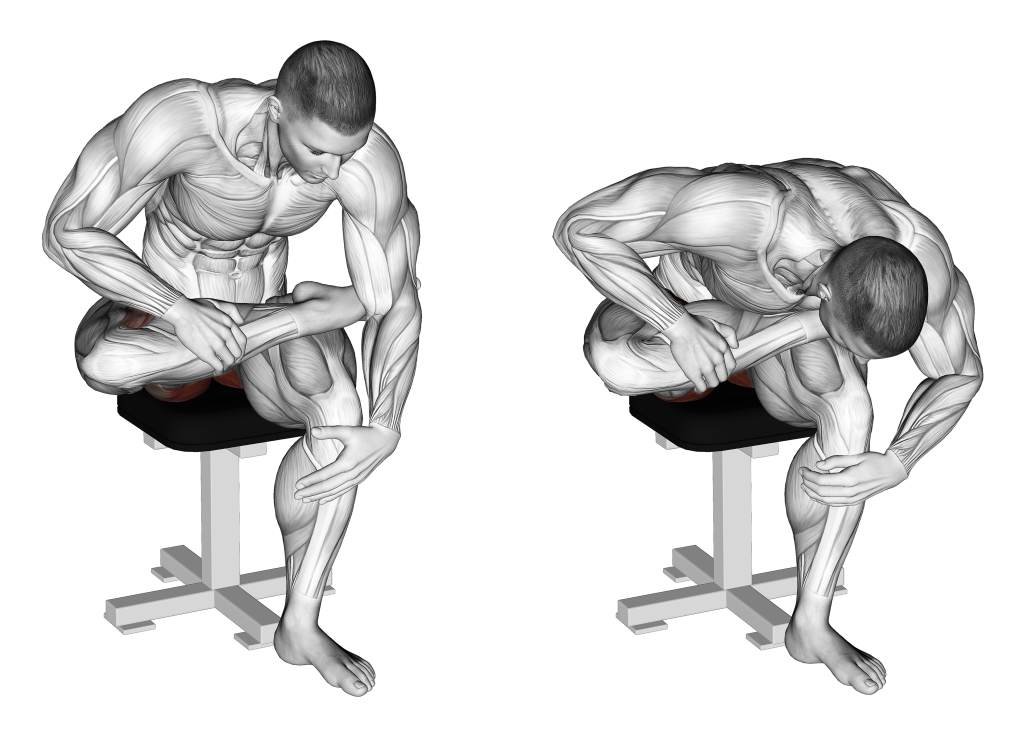
Remember to first speak to a medical professional prior to attempting to correct your sciatica with exercises. The symptoms of piriformis syndrome and sciatica are shared with a number of different conditions - many of which can be worsened by exercising the piriformis muscles.
Excellent for Improving Posterior Chain Mobility, Flexibility and Stability
Outside of a clinical setting, the seated piriformis stretch is also excellent for stretching the entirety of the buttocks - gluteal muscles and pelvis tendons included.
Tight and inflexible tissue in this area can lead to limited squatting depth, poor explosiveness and difficulty raising the legs off the ground above a certain elevation.
To see the most improvement in your lower body, combine the seated piriformis stretch with a hamstring-focused stretch like the runners stretch.
Can Function as a Cool-Off Exercise
As a static exercise of considerably low joint impact, the seated piriformis stretch is excellent when used as part of a post-workout cool-off routine.
When performed correctly, it can reduce the intensity of delayed-onset muscle soreness, aid in speeding recovery and help reinforce conscious contraction of the gluteal muscles.
Low-Impact and Generally Risk Free
Unlike more complex stretches, the seated piriformis stretch is quite low in impact and is unlikely to result in strain or injury to the body.
Only two risks are present with the seated piriformis stretch.
The first is related to lower back strain when leaning forwards at the waist. This can be avoided by contracting the core and ensuring the entire spine remains neutral throughout the stretch.
Likewise, the second major risk is bending the knee to an excessive degree to the side. To prevent this, only bend the knee enough to feel a light stretching sensation along the front of the thigh.
Does Not Require Balancing on One Leg
Unlike many other piriformis-targeted stretches, the seated piriformis stretch is far safer for individuals with poor balance or those who cannot be in a standing position.
Common Seated Piriformis Stretch Mistakes
While it is true that the seated piriformis stretch is a relatively safe stretch, it is important to avoid the following mistakes so as to maximize its benefits.
Raising the Heel of the Standing Leg
In order to maximize the stretching effect of the exercise, the unbent leg should remain stable, foot flat on the floor.
Raising the heel off the ground due to poor mobility can cause the hips to become unbalanced while seated, reducing how far the piriformis and glutes are lengthened.
Leaning Towards Bent Leg
Like raising the heel off the ground, leaning the torso in the same direction as the bent leg will also reduce how far the muscles and tendons are stretched.
While it is entirely fine to bend forwards at the waist, bending to one side will cause the muscles on the same side to shorten as the lower back shifts in the same direction.
Curving Lower Back
When bending forwards at the waist at the start of the stretch, avoid rounding of the lower back. This can lead to unnecessary strain and even injury of the spine.
Remember to brace the core and bend at the waist, not the lower back. Stop performing the stretch if any discomfort or pain is felt along the back.
Alternatives to the Seated Piriformis Stretch
If the seated piriformis stretch doesn’t quite meet your needs, try the three following alternatives out.
Standing Piriformis Stretch
The standing piriformis stretch is a more intense alternative that has the exerciser replicating the same position as the seated variation, only from a standing position. This further stretches the tissues and allows for a greater intensity to be achieved.
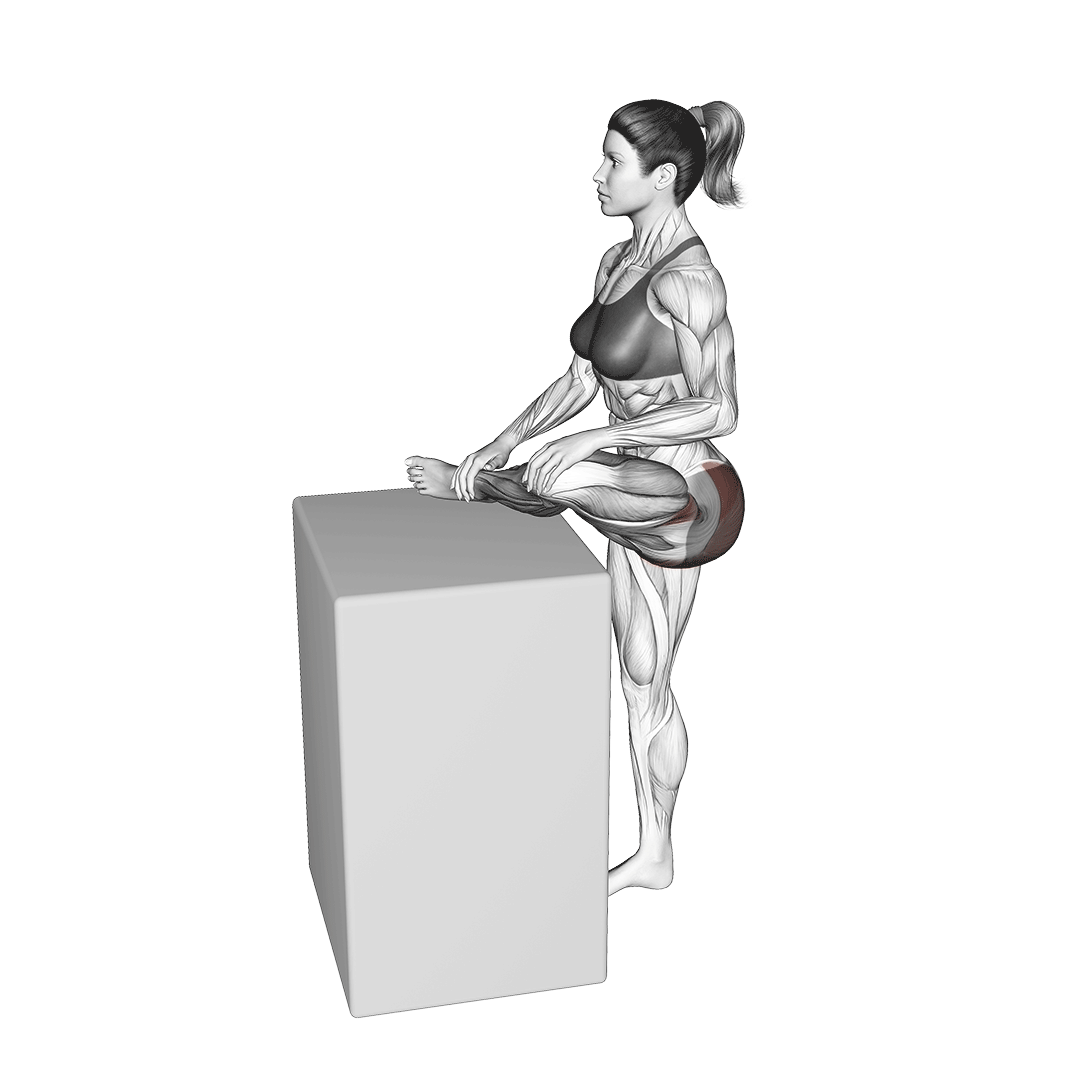
Kneeling Hip Stretch
The kneeling hip stretch is a more active static stretch involving the exerciser entering a kneeling lunge stance and pushing their pelvis forwards. It is performed so as to target the hip flexors, quadriceps, hamstrings and the muscles of the buttocks - piriformis included, to some extent.

Use the kneeling hip stretch as a seated piriformis stretch alternative if you wish to include other tissues in the lower body, rather than solely those of the lower posterior chain.
Supine Piriformis Stretch
The supine piriformis stretch is performed with the exerciser lying atop their back - otherwise recreating much the same “figure 4” position with their legs, un-bent knee drawn up for a greater stretch.
The supine piriformis stretch can be performed in the comfort of the exerciser’s home, and otherwise retains much the same benefits as its sitting counterpart.
Frequently Asked Questions (FAQ)
Does Sitting Cross-Legged Stretch the Piriformis?
Yes - but only to a small degree. To truly stretch the piriformis, targeted flexibility exercises like the seated piriformis stretch will be needed.
What is the Best Position to Relax the Piriformis?
Lying on the back or the side will create the least amount of tension in the piriformis muscles.
Can the Seated Piriformis Stretch be Done on the Floor?
Yes - but you lose out on some of its benefits as the piriformis will not be stretched to the same degree. If you wish to perform the seated piriformis stretch while in a lying position, try the supine piriformis stretch out.
Final Thoughts
Like most other stretches, the seated piriformis stretch is an excellent tool for targeting any weak points present in your body. However, this is not its only purpose, and physical therapy frequently makes use of the seated piriformis stretch to help alleviate pressure on the sciatic nerve.
If performing the stretch for the latter purpose, remember to first seek out advice from a medical professional.
Otherwise, if performing the seated piriformis stretch as part of a mobility routine, don’t forget to also include stretches that target the hamstrings and the muscles of the hips as well.
References
1. Park JC, Shim JH, Chung SH. The effects of three types of piriform muscle stretching on muscle thickness and the medial rotation angle of the coxal articulation. J Phys Ther Sci. 2017 Oct;29(10):1811-1814. doi: 10.1589/jpts.29.1811. Epub 2017 Oct 21. PMID: 29184293; PMCID: PMC5684014.
2. Koes BW, van Tulder MW, Peul WC. Diagnosis and treatment of sciatica. BMJ. 2007 Jun 23;334(7607):1313-7. doi: 10.1136/bmj.39223.428495.BE. PMID: 17585160; PMCID: PMC1895638.
3. Snijders, Chris J et al. “Functional aspects of cross-legged sitting with special attention to piriformis muscles and sacroiliac joints.” Clinical biomechanics (Bristol, Avon) vol. 21,2 (2006): 116-21. doi:10.1016/j.clinbiomech.2005.09.002

